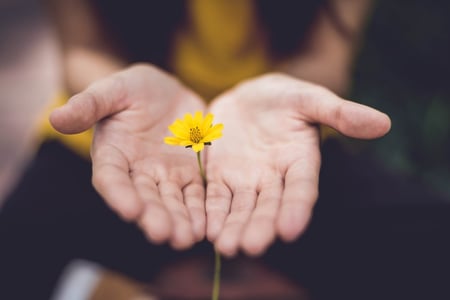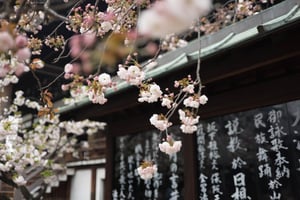Reiki is a Japanese healing modality that promotes peace and relaxation by channeling of universal energy. The practice of “laying of hands” has been used as a form of energy healing across the world and throughout human history.
What is reiki?
The Japanese word reiki comes from the combination of “rei,” which refers to universal energy and “ki,” which refers to life force energy. Thus, reiki can be defined as “universal life force energy.”

The reiki healing technique is one of many forms of energy healing. It is practiced by millions around the world for physical, mental and spiritual rejuvenation. Known as a “non-invasive” technique, it is usually practiced with minimal touch or no physical contact at all. The reiki healer holds their hands close to or on the body in a series of specific positions to channel healing energy, focusing on affected areas and energy blocks.
Reiki can be received in person or via distance healing. The practice can also be applied to oneself, for example through the personal daily practice of reiki meditation.
Origins of reiki
The reiki tradition was founded in Japan by Dr. Mikao Usui in the 1920s. Over the past century, generations of masters have spread reiki techniques in this lineage across the globe. Today, reiki is gaining acceptance in more conventional medical settings as a subtle, yet powerful method to promote self-healing and improve quality of life.
Usui reiki
Dr. Mikao Usui was born in 1865 to an affluent Bhuddist family in Japan. He  studied medicine, philosophy, theology before becoming a Bhuddist monk. It is said that reiki was channeled to him when he embarked upon 21 days of solitude, fasting, meditation, and prayer in a cave at Mount Kurama.
studied medicine, philosophy, theology before becoming a Bhuddist monk. It is said that reiki was channeled to him when he embarked upon 21 days of solitude, fasting, meditation, and prayer in a cave at Mount Kurama.
According to this account, on the morning of the 21st day he experienced a spiritual awakening that marked the birth of the reiki tradition. During this period of solitude he received the reiki symbols and understood the technique using the placement of the hands over the body to channel life force energy. Usui set forth the reiki teachings to transmit this knowledge and pass it onto the first generation of reiki masters.
What is reiki good for?
Millions of people around the world turn to reiki to alleviate physical or emotional pain, anxiety, addiction and depression. Because reiki works simultaneously on the physical, emotional and psychological planes, it can be a gateway to a deeper process of reflection and self-improvement. This can inspire lifestyle changes and healthier choices that lead to improved overall wellness.

What is a reiki healing session like?
A typical reiki session generally lasts between 45 to 90 minutes. Recipients of reiki can keep all of their clothes on. Usually the practice begins at the head or feet and moves over the body, balancing the person’s energy or ki. Some recipients of reiki report feeling heat emanating from the hands of the practitioner and a tingling sensation in the body or on the skin. The sensations are usually subtle, yet many report that they have powerful effects on their mood, health and emotional state.
How does reiki healing work?
Reiki allows life forms including individuals, groups of people, animals, and plants to enter into a harmonious state through the placing of hands over the  body. Many report that reiki can also help liberate suppressed emotions and memories. The theory behind reiki healing is that it reactivates and balances the flow of energy, dissolving blocks that interrupt natural and healthy function.
body. Many report that reiki can also help liberate suppressed emotions and memories. The theory behind reiki healing is that it reactivates and balances the flow of energy, dissolving blocks that interrupt natural and healthy function.
Reiki healers do not expend or deplete their own energy in the practice. Rather, the reiki practitioner serves as a vessel to allow universal energy to flow through them to the physical and energetic body of any living thing.
Energetic anatomy
Reiki works in the realm of energetic anatomy. The energetic body encompasses not only the physical body, but the layers of energy surrounding the body that comprise the aura or biofield, which extends eight feet in every direction. Reiki theory identifies and clears the seven main chakras that open forward and backward at the energy centers of the body, as well as tens of thousands of additional energy channels.

Reported benefits of reiki include:
- Allows release and relaxation (people often fall asleep during a reiki session)
- Increases awareness, clarity and perception
- Boosts immune system
- Provides subtle mental relaxation
- Improves sense of well-being, vitality, and focus
- Helps improve self-esteem
- Slows down the aging process
- Reduces the severity of addiction withdrawal symptoms
- Helps overcome stress, tension, and overwhelm
- Releases negative emotions and calms the nervous system
- Promotes inner peace and calm
After a reiki session, some may experience temporary effects like:
- Temporary physical symptoms such as nausea, lightheadedness, or fatigue, due to the release of toxins in the body
- As blockages are released, uncomfortable or painful emotions or memories can arise from the past that need to be resolved
Can reiki techniques be combined with other holistic modalities?
Reiki lends itself harmoniously to many other holistic health modalities such as psychotherapy, massage, crystal healing and EFT tapping. Holistic health providers who are trained in reiki often find that its principles and teachings permeate their lives, making it easy to intuitively integrate reiki into all of their offerings.
What is reiki massage?
Reiki can support health by clearing blockages to facilitate self-healing. Forthis reason it can be a harmonizing complement to almost any modality, especially massage, arising in what has come to be known as reiki massage.

Although it is sometimes lumped into the category of “massage” by state regulatory boards, reiki itself is not considered massage by its practitioners because it doesn’t involve manipulating tissue or applying pressure.
Nonetheless, even certified reiki masters should have a defendable legal basis from which to provide their services. Practicing reiki without this can put you at risk of serious legal and financial consequences. The Professional Wellness Alliance (PWA) can help reiki practitioners offer their services in a safe and legal environment.
What is crystal reiki?
Many reiki healers incorporate crystal healing into their sessions to augment and enhance the restorative potential of the session. Crystals can be used both to support the reiki healer and the client. Specific crystals selected for their properties relating to each chakra can be placed on and near the body throughout or for a part of the session. Crystals should be cleansed before and after each client.
Crystals often used with reiki include:
- Selenite to cleanse the aura or biofield
- Amethyst for relaxation, balance, spiritual awakening and intuition
- Tourmaline to improve circulation and relieve stress
- Quartz points for purification
interested in incorporating reiki into your holistic services?
The PWA License Program provides you with a safe, legal environment to incorporate reiki healing into your offering. Watch our License Education Webinar to learn more about licensure and if it can protect you and your holistic health business.
.png?width=350&height=350&name=professional-wellness-alliance-logo%20(2).png)




